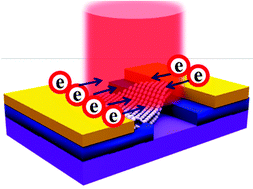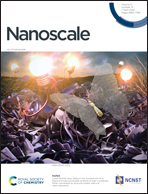An asymmetric contact-induced self-powered 2D In2S3 photodetector towards high-sensitivity and fast-response†
Abstract
Self-powered photodetectors have triggered extensive attention in recent years due to the advantages of high sensitivity, fast response, low power consumption, high level of integration and wireless operation. To date, most self-powered photodetectors are implemented through the construction of either heterostructures or asymmetric electrode material contact, which are complex to process and costly to produce. Herein, for the first time, we achieved a self-powered operation by adopting a geometrical asymmetry in the device architecture, where a triangular non-layered 2D In2S3 flake with an asymmetric contact is combined with the traditional photogating effect. Importantly, the device achieves excellent photoresponsivity (740 mA W−1), high detectivity (1.56 × 1010 Jones), and fast response time (9/10 ms) under zero bias. Furthermore, the asymmetric In2S3/Si photodetector manifests long-term stability. Even after 1000 cycles of operation, the asymmetric In2S3/Si device displays negligible performance degradation. In sum, the above results highlight a novel route towards self-powered photodetectors with high performance, simple processing and structure in the future.



 Please wait while we load your content...
Please wait while we load your content...